Poaching Rules: Essential Laws, Impacts, and Prevention Explained
Updated On: October 23, 2025 by Aaron Connolly
What Are Poaching Rules?
Poaching rules are laws that make it illegal to hunt, capture, or kill wildlife without the right permission or licenses. These rules aim to protect animals and plants from being taken unlawfully from both private and public lands.
Definition of Poaching
Poaching means taking wild animals, fish, or plants illegally. People might shoot, trap, or capture wildlife without asking the landowner.
The law treats several activities as poaching:
- Hunting on private property without permission
- Taking wildlife from protected areas like national parks
- Capturing animals during closed seasons
- Using banned hunting methods or gear
Here’s the thing: legal hunting requires licenses, follows seasonal limits, and respects property rights. Poaching just ignores all of that.
We see poaching happening almost everywhere. In Africa, people hunt elephants for ivory and rhinos for their horns. Some folks even capture tropical fish illegally for aquariums.
Comparison of Legal and Illegal Hunting
Legal hunting follows strict rules and helps manage wildlife. Hunters get licenses and stick to seasonal guidelines.
| Legal Hunting | Illegal Poaching |
|---|---|
| Requires licences and permits | No permits obtained |
| Follows seasonal limits | Ignores closed seasons |
| Respects bag limits | Takes unlimited animals |
| Uses approved methods | May use banned techniques |
| Helps fund conservation | Harms biodiversity |
Legal hunters pay fees that support conservation programs. These funds protect habitats and keep animal populations healthy.
Poaching does the opposite. It threatens species survival and messes up ecosystems. Many animals face extinction, partly because of illegal hunting.
Types of Poaching
Commercial poaching targets valuable animal parts for profit. Criminals sell ivory, rhino horn, and pangolin scales on illegal markets. This trade puts entire species in danger.
Subsistence poaching happens when people hunt illegally for food. This used to be common when poor families needed meat to survive.
Sport poaching is about illegal hunting for trophies or just for fun. Some people go after protected species or hunt on forbidden lands just for the thrill.
Plant poaching targets valuable trees and rare plants. Criminals illegally log rosewood and mahogany. Others steal rare orchids and cacti for collectors.
River poaching hurts fish populations through illegal netting and fishing in protected waters. This wipes out fish stocks and damages aquatic ecosystems.
Key Poaching Laws and Regulations
Wildlife protection leans on a strong stack of national laws and international agreements that treat illegal hunting and capturing of animals as serious crimes. Enforcement agencies work together to hit violators with heavy fines and even prison time.
National Wildlife Legislation
The Endangered Species Act stands as America’s main law against poaching protected animals. This law makes it illegal to kill, capture, or harm any species listed as endangered or threatened.
Penalties can climb to $100,000 in fines and up to a year in prison for first-time offenders. Repeat offenders or organized poaching rings face much harsher consequences.
The Lacey Act adds more protection by making it illegal to transport poached wildlife across state lines. This law helps catch criminals who hunt in one state and try to sell in another.
State laws vary a lot but usually include:
- Hunting license requirements
- Specific seasons for different animals
- Bag limits on game species
- Special protections for rare local wildlife
Many states suspend licenses right away and seize vehicles when they catch poachers.
International Treaties and Agreements
CITES (Convention on International Trade in Endangered Species) controls global trade of threatened wildlife. This treaty covers over 180 countries and protects more than 35,000 species.
We work with other countries to track illegal wildlife products crossing borders. CITES requires permits for any international trade in protected species or their parts.
The treaty sorts species into three groups:
- Appendix I: Complete trade ban (rhinos, tigers)
- Appendix II: Regulated trade only (American black bears)
- Appendix III: Country-specific protections
Violating CITES can bring criminal charges in several countries at once. A dried bear gallbladder can fetch up to $30,000 on the black market, so enforcement really matters.
Enforcement Mechanisms
The U.S. Fish and Wildlife Service leads federal poaching investigations with specialized law enforcement officers. These agents have the same powers as other federal police.
We team up with state wildlife agencies, tribal authorities, and international partners to catch poachers. Modern enforcement uses DNA testing, surveillance cameras, and undercover work.
Common enforcement tools include:
- Reward programs (sometimes $5,000 for tips)
- Anonymous hotlines
- Joint task forces with several agencies
- Seizing vehicles and equipment
Courts can order poachers to pay for the ecological damage they cause. Some judges even require community service in wildlife conservation programs as part of the sentence.
Role of Game Wardens and Enforcement Officials
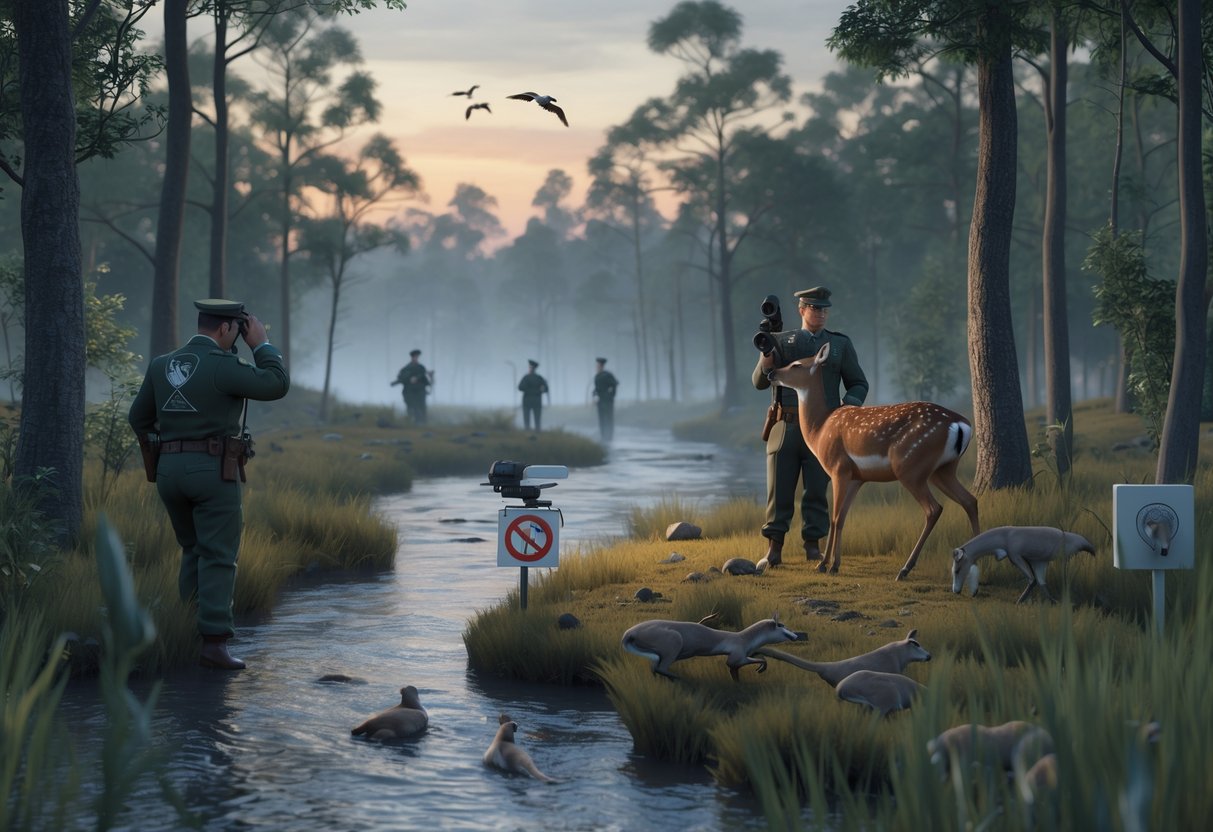
Game wardens serve on the front lines against poaching across wildlife areas and hunting grounds. They mix traditional patrol methods with new tech to spot illegal hunting and build strong cases.
Patrolling and Surveillance
Game wardens cover huge territories using a bunch of surveillance methods. They set up thermal cameras at choke points and along roads where poachers might travel.
These cameras spot human shapes and movement automatically. When someone enters a monitored area, the system pings wardens right away.
Modern surveillance tools include:
- Heat-detecting cameras that work up to a mile away
- Ballistic shockwave sensors that pinpoint gunshots
- Drones with night vision
- Acoustic systems that pick up bullet sounds
Wardens still use classic tactics like informants and foot patrols. A lot of them rely on local tips and community reports to spot suspicious activity.
Fixed-wing drones can fly for hours at 20,000 feet. They cover big areas while staying nearly silent and invisible to poachers.
Some conservation groups now put heart monitors in big game animals. If an animal’s heart stops suddenly, wardens get instant GPS alerts.
Investigation of Poaching Offences
When wardens spot possible poaching, they start detailed investigations. DNA analysis has changed the game for building cases.
Wardens gather DNA samples from protected animals and build location-specific databases. If they find illegal animal parts, they can trace them back to certain herds or spots.
Investigation techniques include:
- DNA matching to find kill sites
- Ballistic analysis from shockwave sensors
- Video from surveillance cameras
- GPS tracking data from collared animals
South Africa’s RhODIS system shows off advanced DNA investigation. When officials find rhino horn, they run DNA tests to locate the animal’s body and press serious charges.
Wardens team up with forensic biologists to map animal populations. This creates detailed records that help spot poaching patterns across regions.
Modern investigations combine lots of evidence. Wardens might use drone footage, acoustic sensor data, and DNA tests to build solid cases against repeat offenders.
Poaching and Biodiversity Loss
Poaching drives species loss across the globe, threatening the variety of life that keeps our planet ticking. When illegal hunters target certain animals, they shake up entire ecosystems and push vulnerable species closer to extinction.
Impact on Ecosystems
Poaching removes key animals that keep ecosystems balanced and healthy. When poachers kill elephants, they wipe out nature’s gardeners who spread seeds and create paths for smaller animals.
A single elephant can scatter 3,000 plant seeds every day across several kilometers. Without them, forests change fast and lose their natural shape.
Predator removal kicks off a whole mess of problems:
- Prey animals boom without natural controls
- Overgrazing wipes out plant communities
- Soil quality drops from too much trampling
- Water sources get polluted
Forests in poached areas store about 40% less carbon than protected ones. That weakens our natural shield against climate change.
Pollinator species like certain birds and insects also take a hit from poaching. When their numbers drop, crop yields fall and wild plants struggle to reproduce.
Extinction Risks for Species
A lot of iconic species teeter on the edge because of heavy poaching. African elephant populations have dropped by over 30% in just ten years, leaving fewer than 400,000 across the continent.
Current extinction threats include:
- Rhinos: Only 27,000 left (down 90% from historic numbers)
- Tigers: Fewer than 4,000 individuals in the wild
- Pangolins: 80% population decline in some areas
- Northern white rhinos: Basically extinct since 2018
Poaching causes about 35% of all wildlife population drops worldwide. The illegal trade brings in between £5-18 billion a year, making it the fourth biggest criminal industry.
Species with slow reproduction rates face the most danger. Big mammals that have few babies can’t bounce back quickly from poaching losses.
When we lose these animals, we lose their unique genetics forever. Each extinct species is millions of years of evolution gone for good.
Common Poaching Methods and Tactics
Poachers use three main tactics to kill wildlife illegally: shooting animals with guns, setting traps and snares, and targeting protected areas where animals gather. They mix high-tech gear with simple tools to dodge law enforcement.
Illegal Shooting and Trapping
Illegal shooting is still the most direct poaching method around the world. Poachers use rifles with silencers to kill big animals like elephants and rhinos without tipping off rangers.
A lot of criminals go for powerful weapons with night vision scopes so they can hunt in the dark. This gear lets them work when park rangers aren’t out as much.
Shooting targets include:
- Elephants (for ivory)
- Rhinos (for horns)
- Big cats (for bones and pelts)
- Antelope species (for meat)
Trapping and snaring catch more animals than shooting because these methods work even when no one’s around. Wire snares grab animals by the neck or legs, causing slow death by strangulation or blood loss.
Cage traps catch smaller animals alive for the illegal pet trade. Poachers often use bait or recorded animal calls to lure animals into cages.
Pitfall traps go after reptiles and invertebrates for black market sales. Animals fall into holes they can’t escape.
Use of Prohibited Equipment
Modern poachers lean hard on banned tech to track and kill wildlife. GPS devices help them find animal herds and plan quick exits from protected areas.
Drones give poachers an eye in the sky to watch animal movements without alerting ground patrols. Some criminal groups use drones to track ranger patrols and dodge arrest.
Prohibited weapons include:
- Automatic rifles
- Crossbows with poisoned bolts
- Explosives for fishing
- Electrocution devices
Poison is one of the nastiest illegal tools. Criminals spike waterholes or carcasses with toxic chemicals to kill multiple animals at once.
This method wipes out whole food chains when scavengers like vultures die from eating poisoned meat. One poisoning event can erase dozens of species from an ecosystem.
Communication gear like encrypted radios and satellite phones helps poaching networks coordinate across huge areas while staying ahead of law enforcement.
Exploitation of Protected Areas
Criminal groups go after national parks and wildlife reserves because these places have the most valuable species. Thick vegetation in protected forests helps them hide illegal activity.
Poachers take advantage of weak enforcement in remote areas, where ranger stations don’t have enough staff or equipment. They tend to operate when patrol funding drops during certain seasons.
Border regions between countries create gaps in enforcement, and criminal networks jump on those opportunities. When animals cross international lines, they become easy targets if nations don’t coordinate.
Community boundaries around protected areas give poachers access points for illegal hunting. Some of them even recruit local residents who know where animals move and when rangers patrol.
When corruption seeps into park management, organised crime groups move in almost unchecked. Officials who take bribes tip off criminals about enforcement operations and let wildlife products pass through safely.
Even tourist areas aren’t safe from poaching, oddly enough. Roads and infrastructure make it easier for criminals to get in, and popular viewing spots become predictable places to find target species.
Targeted Wildlife and Illicit Trade
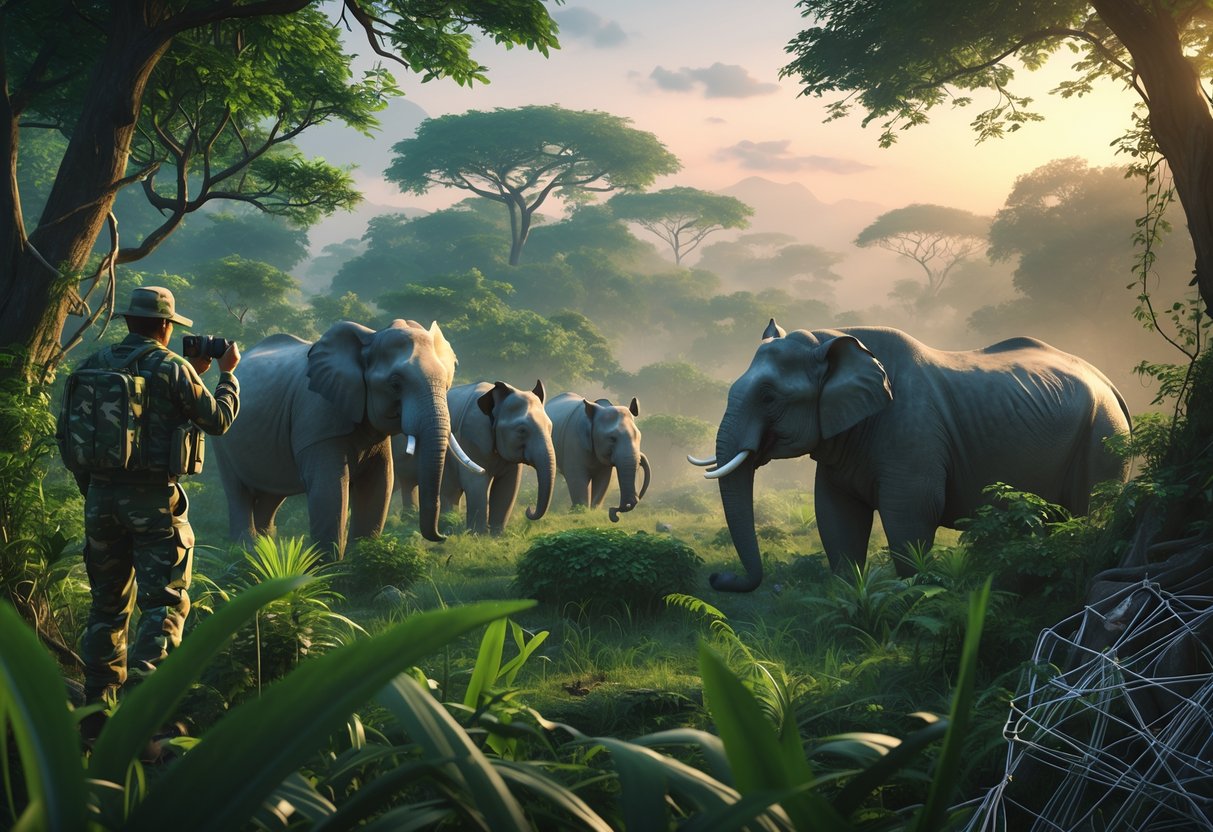
Wildlife traffickers focus on certain species because of their rarity and high market value. Criminal networks run sophisticated black market operations to meet demand for exotic animals, body parts, and products.
Trade in Endangered Species
Poachers go after endangered species since scarcity makes them more valuable. The rarer the animal, the higher the price on illegal markets.
Most trafficked endangered animals include:
- Rhinos (horns for traditional medicine)
- Elephants (ivory tusks)
- Tigers (bones, skin, organs)
- Pangolins (scales for medicine)
Brazil loses at least 12 million wild animals to poaching every year. Ecuador’s 1,600 bird species attract wildlife traffickers from all over.
Poachers use different hunting methods depending on the animal. They set snares for small animals like pangolins, but they’ll use guns or poison for bigger mammals such as elephants and rhinos.
The Convention on International Trade in Endangered Species tries to regulate legal wildlife trade. Still, traffickers get around these protections with forged documents and the help of corrupt officials.
Criminal organisations operate in several countries at once. They take advantage of weak enforcement in source countries and aim for wealthy buyers in destination markets.
Black Market Dynamics
Wildlife trafficking works a lot like other illegal trades, with tangled supply chains. Poachers sell to local middlemen, who move the goods to international smugglers.
Key market factors:
- Supply: Limited by how many animals are left
- Demand: Pushed up by wealth in consumer countries
- Risk: Low prosecution rates make trafficking attractive
- Profit: Margins are sky-high
Transport companies sometimes get used without knowing it. Traffickers hide animal parts in regular cargo or even in passenger luggage.
Prices shoot up along the supply chain. A rhino horn that fetches £500 from a poacher might sell for £50,000 by the time it reaches the end buyer.
Online platforms have opened up new ways to traffic wildlife. Social media and encrypted apps help traffickers connect with buyers and dodge law enforcement.
Law enforcement agencies face resource shortages and struggle to coordinate internationally. Meanwhile, the illegal wildlife trade brings in billions for criminal networks.
Plant and Fish Poaching
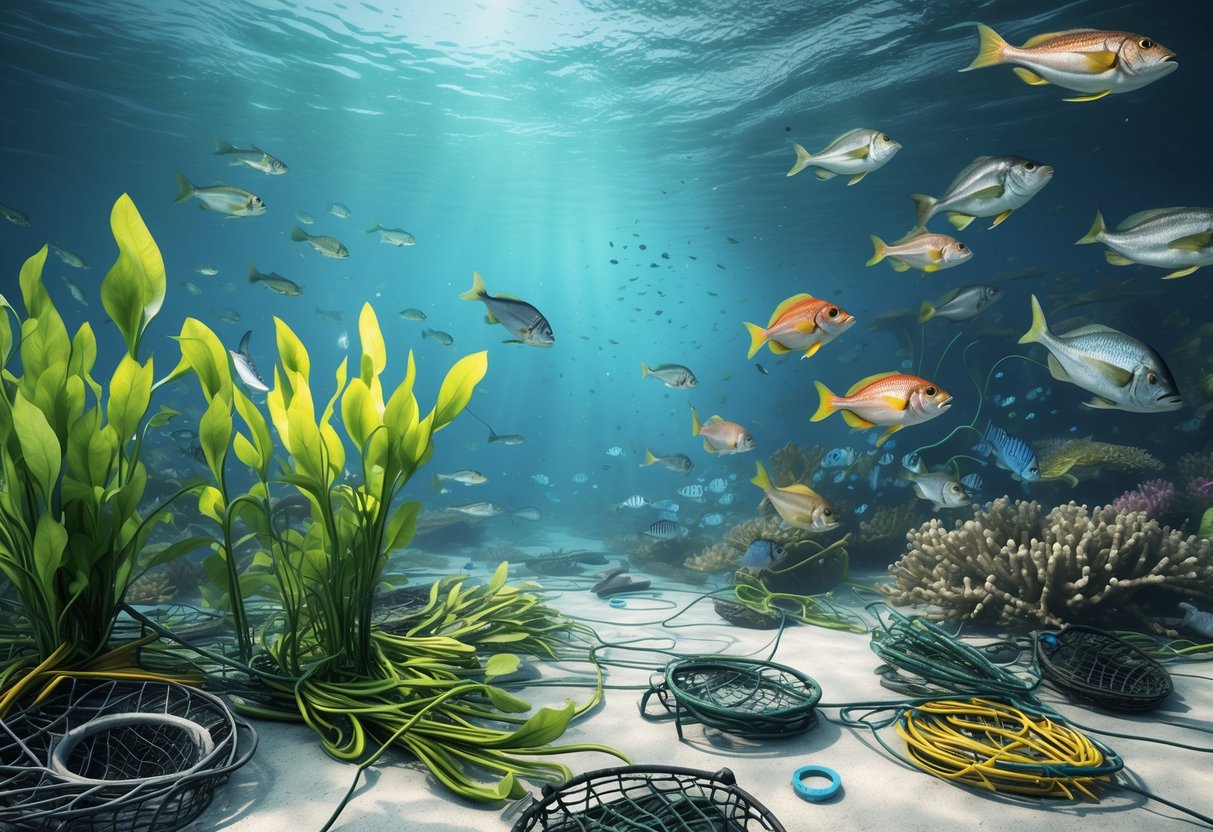
Plant and fish poaching means illegally removing trees, plants, and aquatic species without permits or outside legal seasons. These crimes wreck ecosystems and push endangered species closer to extinction, all while generating millions in illegal profits.
Illegal Logging and Plant Collection
Illegal loggers go after valuable timber like mahogany and oak. They cut down protected trees on public land or even steal from private property. This destroys habitats and costs landowners a fortune.
Poachers also target rare plants like Venus flytraps and wild orchids. Collectors sell these to private buyers or nurseries. A single rare orchid can sell for £500 on the black market.
The Lacey Act bans transporting stolen plants across state lines. Offenders can face up to a year in prison and fines up to £80,000. Many countries also ban importing illegally harvested timber.
Tree poaching usually involves:
- Cutting hardwoods at night
- Pulling up rare medicinal plants
- Stealing decorative species from parks
- Harvesting protected trees in conservation areas
Fishing Without Licence or Out of Season
Fishing without a licence breaks local wildlife laws. Anglers need permits and have to stick to bag limits. Poachers who fish out of season risk £5,000 fines and can lose their fishing rights.
Out-of-season fishing hits fish populations during breeding. This throws off the food chain and hurts the ecosystem. Salmon during spawning and protected species like sturgeon are common targets.
Common fishing violations include:
- Fishing during closed seasons
- Taking more than the daily catch limit
- Using banned methods
- Catching protected species
Commercial poaching in fishing gets bigger crews involved. They harvest fish illegally and sell to restaurants or markets. A single illegal fishing trip can bring in thousands, but it leaves a lasting mark on the environment.
The Fight Against Poaching
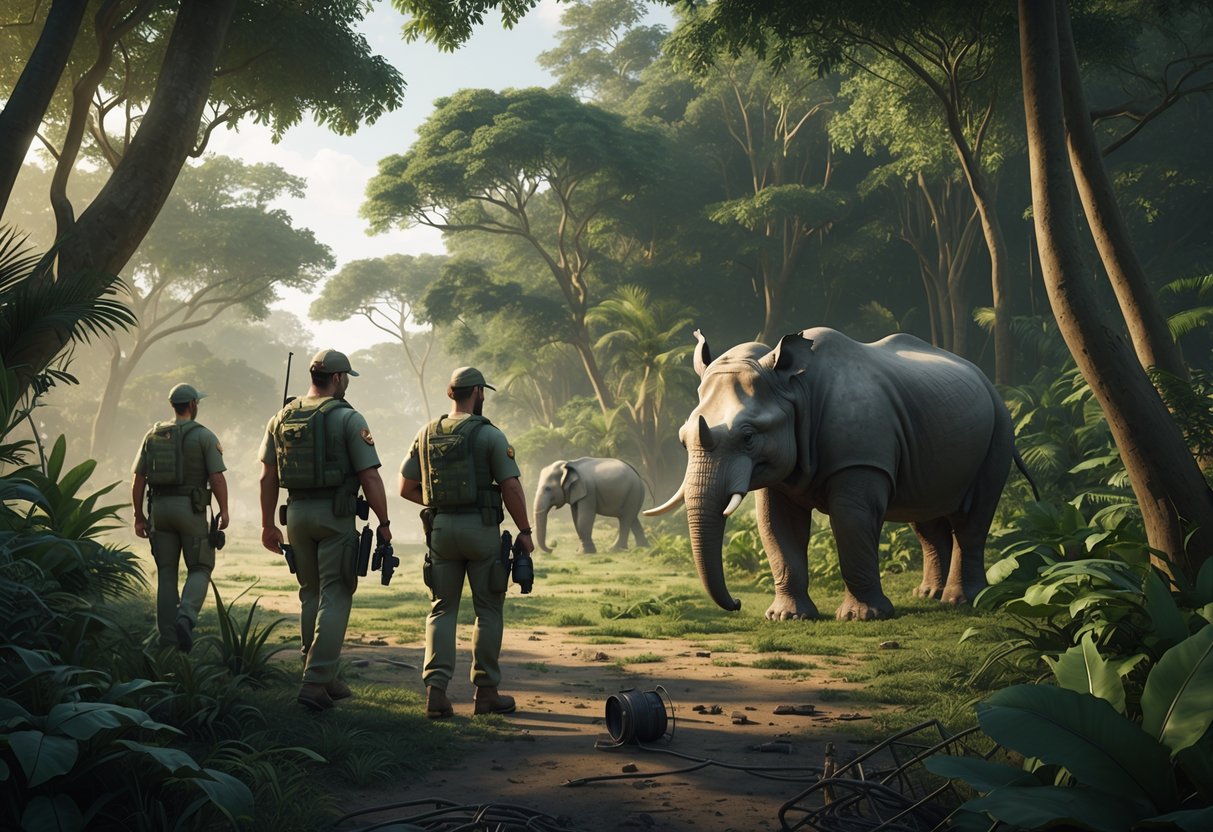
Fighting poaching takes teamwork on many levels. Wildlife conservation only works when well-funded programmes, community support, and strong international partnerships come together.
Conservation Programmes
Conservation programmes are crucial for stopping poaching. These efforts blend traditional ranger patrols with the latest technology to keep endangered species safe.
Game wardens use drones with thermal cameras to watch over huge areas. These drones can spot poachers from miles away, even at night. Camera traps snap photos of wildlife and possible threats automatically.
GPS collars track animal movements. When elephants or rhinos wander into risky zones, rangers get instant alerts. This tech has cut poaching by up to 40% in some areas.
The SMART (Spatial Monitoring and Reporting Tool) system has changed how we track conservation. It pulls in data from:
- GPS devices
- Camera traps
- Ranger patrol reports
- Satellite imagery
Many programmes focus on training local rangers. With better equipment and regular training, rangers become much more effective at protecting wildlife. Some areas have seen poaching numbers drop after investing in ranger education.
Community Involvement
Local communities matter a lot in the fight against poaching. When people living near wildlife areas benefit from conservation, they become allies instead of threats.
Alternative livelihood programmes give people new ways to earn money. Instead of poaching, locals can work as:
- Ecotour guides
- Wildlife monitoring assistants
- Conservation educators
- Craft makers selling to tourists
Zimbabwe’s CAMPFIRE programme really shows how this can work. Local people manage their own wildlife resources and keep the profits from tourism. Poaching dropped because protecting animals now pays more than killing them.
Education programmes teach kids about biodiversity and conservation. Schools near protected areas often include these topics in their lessons. Students learn why saving elephants and rhinos helps their whole community.
Community conservancies give locals the legal power to manage wildlife. When they control conservation decisions, they work harder to protect animals. This approach succeeds in many parts of Africa and Asia.
International Cooperation
Wildlife trafficking crosses borders, so international cooperation is absolutely necessary. Countries need to team up to stop the illegal trade in animal products.
CITES (Convention on International Trade in Endangered Species) oversees wildlife trade between nations. This treaty covers more than 35,000 species and helps countries coordinate protection.
Border control agencies swap info about trafficking routes. When one country spots a smuggling network, they alert their neighbours right away. This has led to big arrests and seizures.
Operation Thunderbird is a good example of global teamwork. This INTERPOL-led operation involved 43 countries and resulted in:
- Hundreds of arrests
- Thousands of confiscated wildlife products
- Disrupted trafficking networks worth millions
Wealthy nations send financial support to countries with endangered species. The UK’s Illegal Wildlife Trade Research Programme funds anti-poaching research in Africa and Asia. These partnerships supply equipment, training, and technical expertise.
International courts now treat wildlife trafficking as a serious crime. Some countries punish major poaching like drug trafficking, with harsh prison sentences and big fines.
Corporate and Employee Poaching: Legal Boundaries

Employee poaching falls under strict legal rules, which are totally different from wildlife protection laws. Main legal risks include breaking non-compete agreements, stealing trade secrets, and tortious interference claims.
Distinction from Wildlife Poaching
Employee poaching isn’t about illegal hunting or wildlife crime. It just means recruiting workers from other companies.
This practice is legal in most cases. We can reach out to talented employees and offer them better jobs. There aren’t any criminal penalties for hiring from a competitor.
Key differences include:
- Wildlife protection laws don’t apply
- Criminal courts aren’t involved
- Disputes are about contracts and business, not crime
The main legal risks come from employment contracts. These might have non-compete clauses or confidentiality agreements that limit when and how someone can change jobs.
Relevant Employment Laws
Several employment laws set boundaries for employee recruitment. Non-compete agreements stop workers from joining competitors for a certain time after leaving.
Trade secret protection is key. We can’t hire employees just to get confidential info like customer lists, pricing, or technical know-how.
Tortious interference comes into play if recruitment actively messes with existing business relationships. Courts might step in if we deliberately hurt a competitor by aggressive poaching.
Common legal restrictions:
- Non-solicitation clauses (usually 6-12 months)
- Confidentiality agreements (guarding proprietary data)
- Garden leave (paid time before joining a competitor)
Most disputes settle in employment tribunals, not criminal courts. Companies often negotiate settlements instead of dragging things out in court.
Tortious Interference and Confidential Information

Tortious interference happens when someone purposely disrupts business relationships using improper tactics. Trade secrets and confidential information often become the focus in these cases.
Tortious Interference Explained
A third party commits tortious interference when they intentionally disrupt a valid business relationship. This causes real economic harm to the original business.
To prove tortious interference, we need four things:
- A valid contract or business relationship existed
- The defendant knew about it
- They intentionally disrupted it
- Actual damage resulted
The crucial difference is between fair competition and improper interference. Competing for clients is fine, but crossing the line isn’t.
Courts look for deceitful or malicious conduct. Using confidential info to steal clients usually qualifies as improper.
For example, if someone downloads client lists before quitting, that shows intent. Contacting clients with insider info breaks legal boundaries.
Timing can make a difference too. Employees who plan competing businesses while still on the job face stronger claims against them.
Protection of Trade Secrets
Trade secrets cover things like client lists, pricing models, and business strategies. The Uniform Trade Secrets Act says these are valuable because they’re secret.
Businesses need to take real steps to protect their secrets. This includes:
- Non-disclosure agreements (NDAs)
- Limiting who can access sensitive data
- Clear confidentiality policies
- Secure storage
Courts want to see proof that companies actually protected their secrets. If a business didn’t bother, it’s harder to win a legal case.
The Economic Espionage Act makes stealing trade secrets a crime. That shows how seriously the law takes these issues.
Evidence of misappropriation might include downloading files before quitting or suspicious messages to clients. Companies should document these things quickly.
Trade secret cases often turn on how info was taken and used. Good documentation helps prove something shady happened.
Recent Trends and Future Challenges
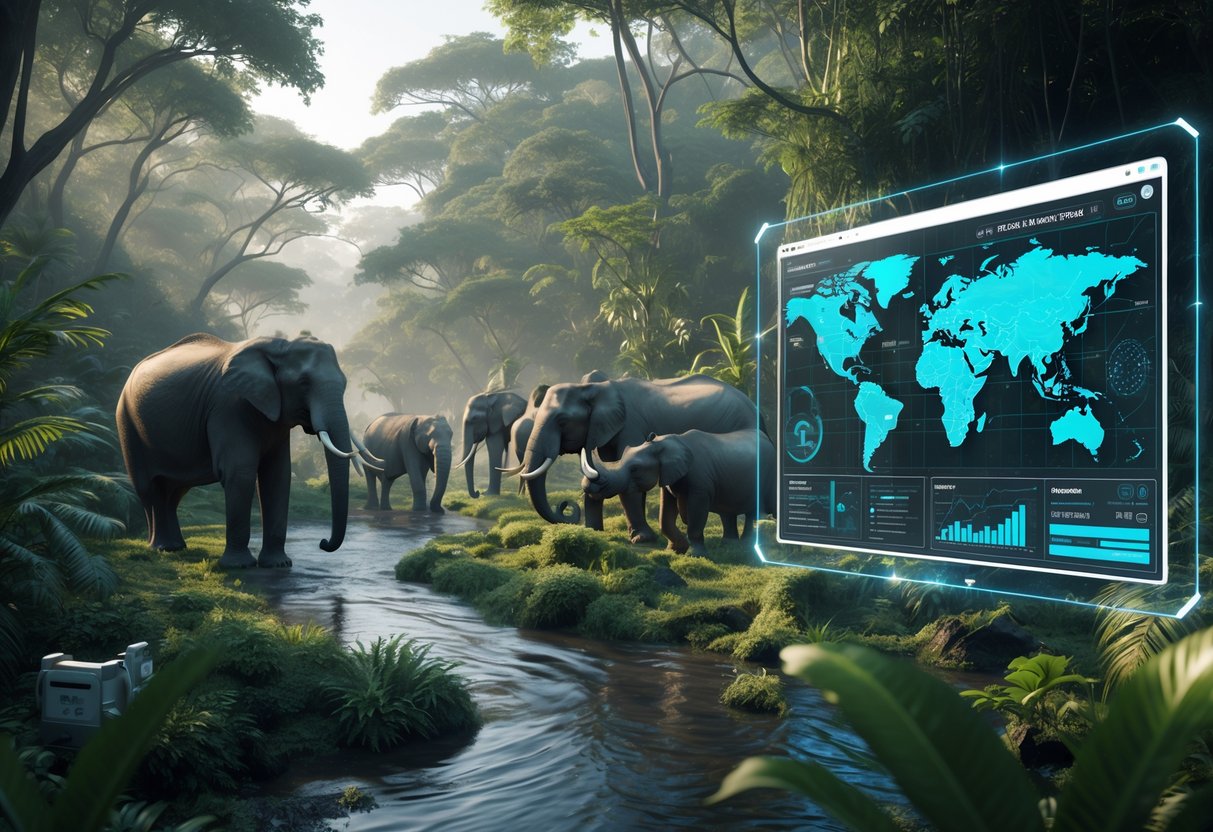
Poaching has changed a lot—it’s not just about illegal hunting anymore. Now, sophisticated criminal networks use advanced technology, and governments are scrambling to keep up with these fast-moving threats.
Technological Advancements in Poaching
Modern poachers now use military-grade equipment. Criminal networks track animal herds with satellite imagery and coordinate attacks through encrypted messaging apps.
They tap into conservation frequencies to follow GPS-collared animals. What was meant for protection ends up helping hunters instead.
Night vision goggles and drones let syndicates dodge rangers. Some even use thermal imaging to spot wildlife from far away.
Digital coordination has shifted poaching from scattered incidents to organized crime. Traffickers move products across continents, often selling through dark web marketplaces.
This tech arms race means anti-poaching units need military-style training, too. Rangers now face cyber threats as well as physical dangers.
Evolving Legal Responses
Poaching laws lag behind the tech used by criminals. Many countries still treat wildlife crime as a minor offense, not as organized crime.
New legal frameworks now go after the whole supply chain. Laws increasingly target:
- Money laundering tied to wildlife products
- Cyber surveillance of criminal groups
- Intelligence sharing across borders
Some regions require poachers to pay restitution for killed animals. Fines can reach up to £50,000 per rhino or elephant.
Blockchain technology helps verify legal animal products. Tamper-proof records cut down on market fraud.
International cooperation has improved with treaties like CITES. Still, enforcement varies a lot from country to country.
Mobile apps let people report suspicious activity anonymously. These tools make it safer for communities to help protect wildlife.
Frequently Asked Questions
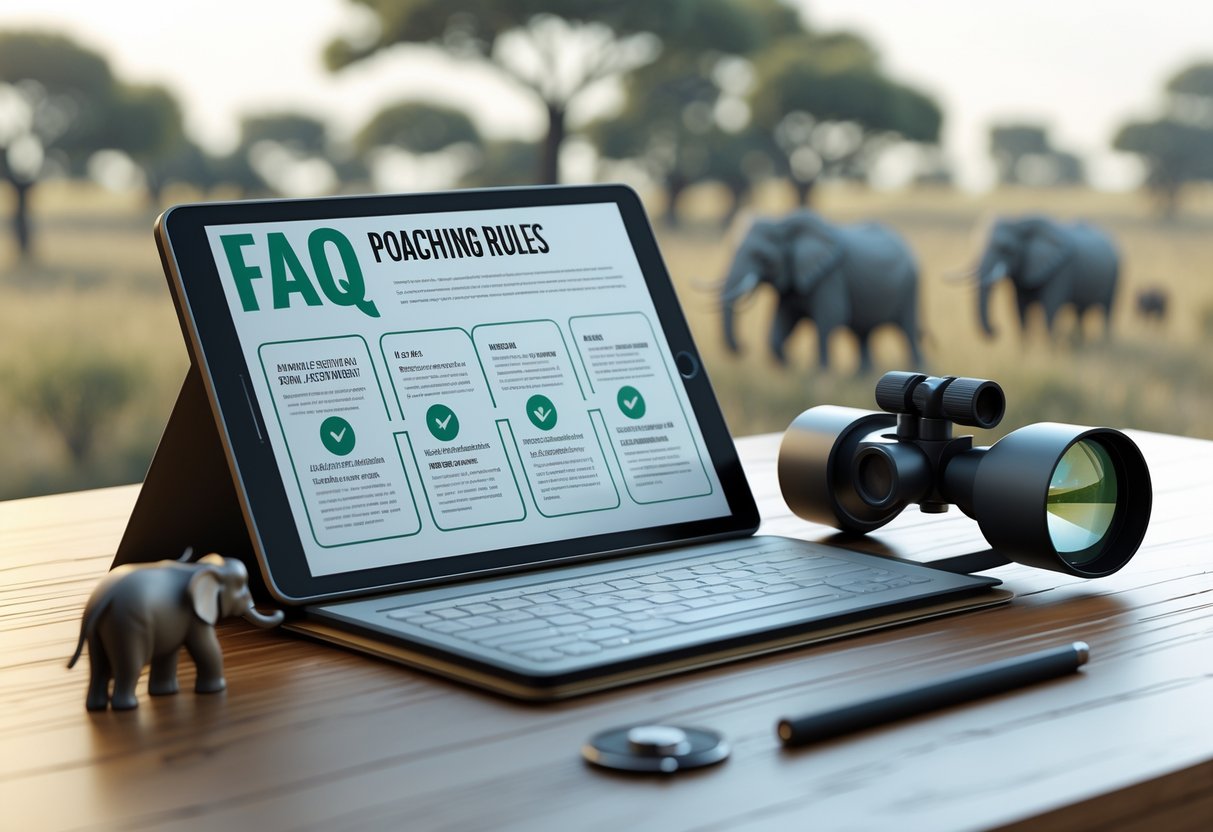
These questions touch on both wildlife poaching laws and employee recruitment issues. Wildlife poaching leads to criminal charges and hefty fines, while employee poaching usually ends up as a civil dispute between companies.
How can organisations handle the poaching of their staff by other companies?
Companies use non-compete agreements and employment contracts to protect themselves. These documents should spell out restrictions on joining competitors or taking clients.
If someone breaks a contract, the company can sue for damages or get a court order to stop a former employee from working for a rival.
But honestly, prevention works better than lawsuits. Keeping employees happy with good pay and career growth usually does more to reduce turnover.
What legal actions can be taken against poachers of wildlife?
Wildlife poaching brings serious criminal charges in most countries. Offenders face big fines and prison time, sometimes for several years.
Courts can also seize vehicles and hunting gear. Repeat poachers get even harsher penalties.
Conservation groups can file civil lawsuits for habitat restoration. Courts might issue injunctions to block further poaching and order environmental repairs.
Can businesses face legal consequences for the poaching of employees?
Companies that lure employees from competitors risk civil lawsuits. Legal action usually focuses on contract violations rather than criminal charges.
If a business knowingly encourages contract-breaking, it can get sued for tortious interference. Damages might cover lost profits and legal fees.
The biggest legal risks come from stealing trade secrets or whole teams. Companies need to check contracts before hiring from rivals to avoid trouble.
Are there specific regulations on poaching within the United States?
The Endangered Species Act forms the backbone of wildlife protection in the U.S. Breaking it can mean fines up to $50,000 and a year in prison for each offense.
State laws add another layer and can differ a lot. Some states give extra penalties for poaching on private land or during closed seasons.
International treaties like CITES also regulate wildlife trade. These rules bring more legal consequences for trafficking protected species between countries.
What determines if poaching is considered a criminal offence?
Hunting without permits or on restricted land turns poaching into a crime. Protected species bring the toughest penalties.
The law looks at where the crime happened, which species were involved, and how the hunting took place. Poaching endangered animals usually leads to felony charges.
Intent matters, too. Accidentally killing protected wildlife brings lighter penalties than poaching for profit.
Is it deemed unethical to recruit employees from competitors?
Most people consider recruiting from competitors a normal part of business. The trouble starts when companies go after employees with restrictive contracts or take confidential information.
You should respect non-compete agreements and steer clear of anything that could harm professional relationships. It’s usually better to be open about job opportunities instead of sneaking around.
Industry standards? They can be all over the place. Tech companies almost expect folks to move around, but some traditional industries don’t look kindly on hiring from rivals.

